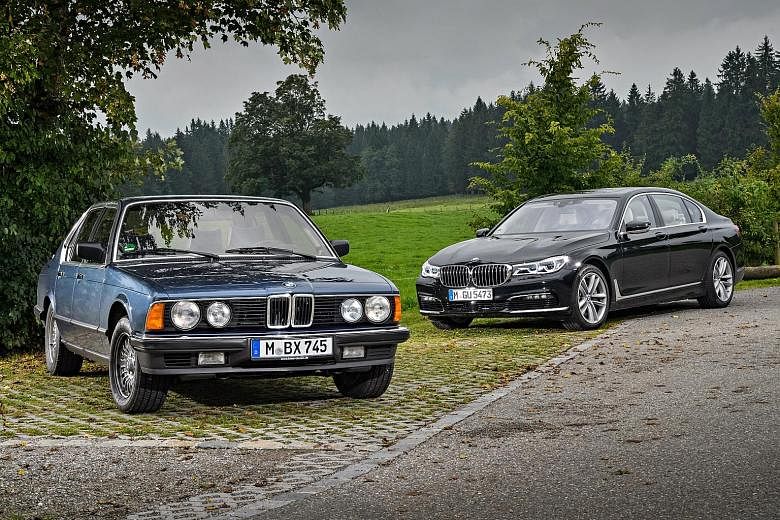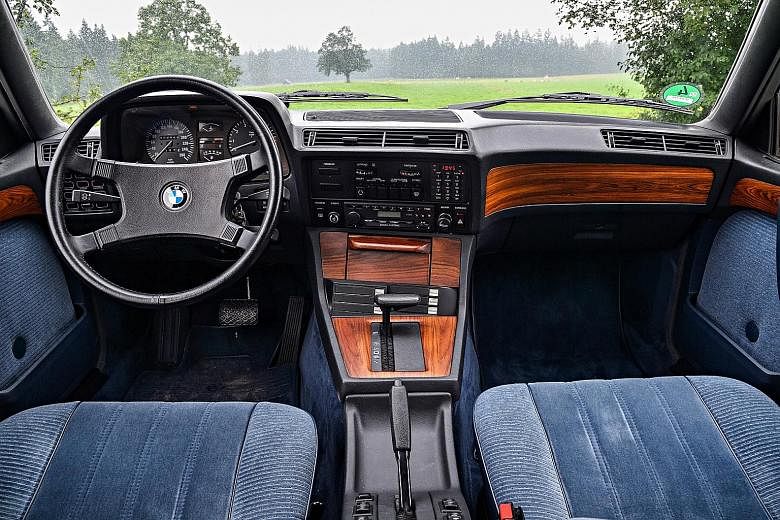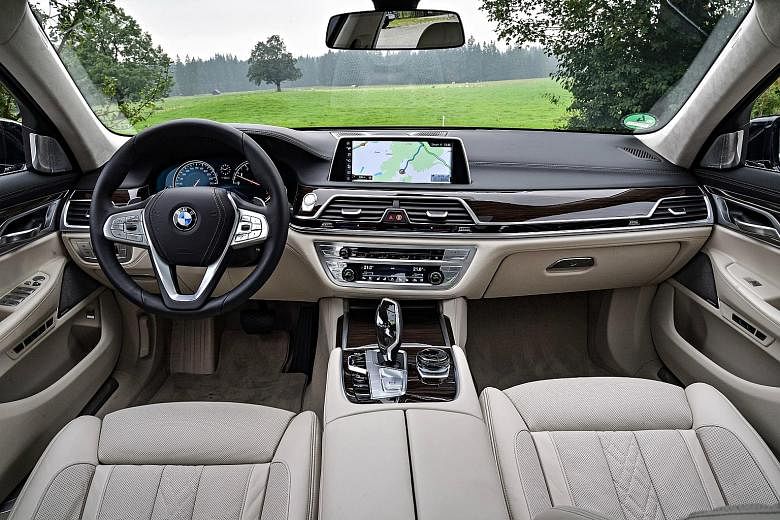Classic cars fascinate me because unlike new cars, they each have a story to tell. Sitting in one is probably as close as you will get to being in a time machine.
I travelled back to 1983 when I got behind the wheel of a first-generation BMW 7-series, code-named E23.
This particular model, 745i, is a lot smaller than its modern counterpart, the 750Li, code-named G11. In fact, the current 5-series is larger than the E23.
Although the 745i looks dated and boxy, there is something to be said about its simpler and cleaner lines. I like its face, which seems to have a friendlier expression compared with the more aggressive 750Li's.
The 745i's cockpit, however, is not as simple as I thought it would be. Operating the air-conditioner and radio is a cinch, but because the buttons are labelled in German and English, they were bewildering.
Even more confusing was the panel to the left of the steering wheel, which had lots of German labels. I was told that it was designed to warn the driver of faults - very advanced for its time.
-
SPECS / BMW 745i 3.2; 750Li xDrive 4.4
-
Price: Unavailable; from $578,800 with COE
Engine: 3,210cc 12-valve inline-6 turbocharged; 4,395cc 32-valve V8 turbocharged
Transmission: Three-speed automatic; eight-speed automatic with manual select
Power: 252bhp at 5,200rpm; 450bhp at 5,500rpm
Torque: 380Nm at 2,600- 4,000rpm; 650Nm at 1,800- 4,500rpm
0-100kmh: 7.5; 4.5 seconds
Top speed: 221kmh; 250kmh (electronically limited)
Fuel consumption: 7.8; 8.3 litres/100km
Agent: Performance Motors
Far easier to comprehend are the oil change and service indicator lights on the instrument panel. Again, this was a relatively high- tech feature for a car, even a luxury one, in 1983.
As a reflection of its era, the 745i could also be specified (as this test car was) with six cassette tape holders.
In comparison, the 2016 750Li is a lot more intuitive. The dashboard layout is tidy, with nothing analogue. In fact, everything is fully digitised and electrically powered, from the seats to the parking brake.
For music, insert CDs, stream Spotify or plug in a thumbdrive filled with your favourite songs.
The car's more complex features are accessed using iDrive, BMW's rotary infotainment control which has been widely copied. With satellite navigation and a concierge service, the 750Li owner has the world at his fingertips.
When it comes to performance, the 750Li driver will also have plenty to smile about. Beneath that long bonnet is a turbocharged 4.4-litre V8 that delivers 450bhp and 650Nm - figures that propel 1.9 tonnes of sheet metal from zero to 100kmh in 4.5 seconds.
The 750Li is effortless to drive. Even without setting the drive mode to Sport or Sport+, this limousine pulls away with ease as I flex my right foot.
This particular unit is equipped with xDrive (BMW's all-wheel-drive system), which makes progress more surefooted.
Indeed, the rain in Munich did nothing to dampen the car's performance. The 750Li xDrive feels light on its feet and is agile enough to take on any corner.
Meanwhile, the 745i goes about its business in an equally refined, but more gentle manner. It has 252bhp and 380Nm, but in 1983, those numbers were pretty darn healthy, especially for a car weighing just under 1.6 tonnes.
The engine responsible for these outputs is a turbocharged 3.2-litre inline-6. It is not as quiet as the 750Li's V8, but what it lacks in refinement, it makes up for in character. BMW's inline-6 motors have a reputation for smoothness and this 3.2-litre unit is no exception. For a 33-year-old power plant, it certainly does not mind being stretched past 4,000rpm. In fact, it sounds deliciously throaty.
Cruising on the highway in it feels like sitting in an old cushy armchair. Surprisingly, for such an upright and boxy car, there is very little wind noise, even at 120kmh.
The 745i has only three forward gears. But since the ratios are so tall, it never feels like I need more.
Tackling mountain roads in the 745i is an interesting experience. The car is so softly sprung that it feels like a battleship cutting through waves when I charge into corners.
I constantly remind myself that this was how limousines handled more than 30 years ago. The 745i does not have adaptive dampers or sports suspension. It has been set up to tackle real-world conditions, where comfort, not sportiness, counts.
Besides, having to manoeuvre that wide-diameter steering wheel, which is linked to a helm with plenty of slack, is a challenge in itself. The faster I go, the quicker my arms have to work. The 745i is involving, to say the least.
Both cars are engineered to impress drivers with their performance and cosset passengers with their refinement. As flagship models, they are also equipped with the most advanced features of their era.
These cars are 33 years apart, but either one will bring on a smile on the dreariest of days.
•The writer is with Torque, a motoring monthly published by SPH Magazines.



